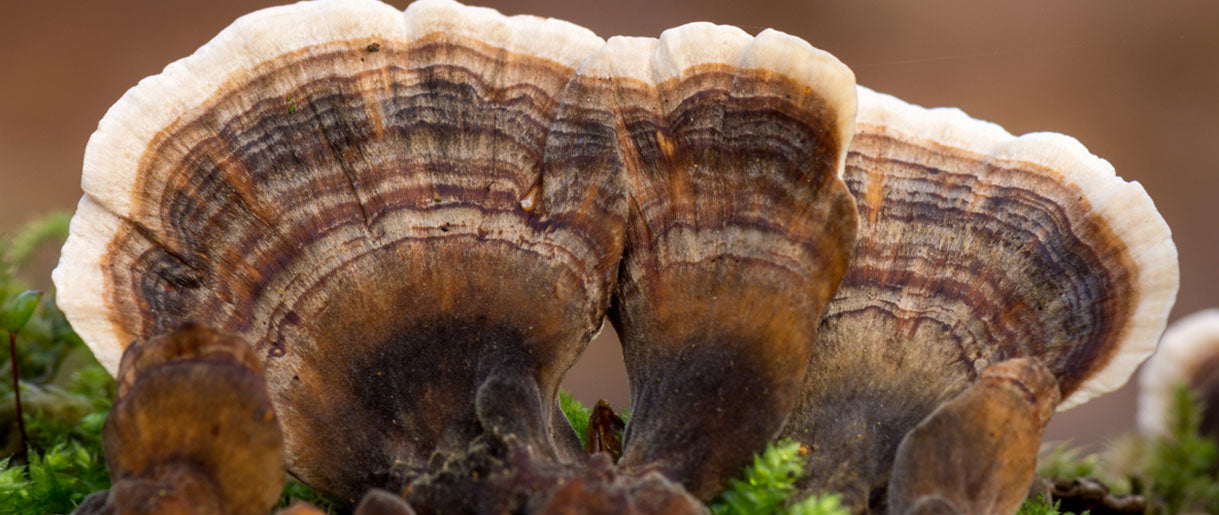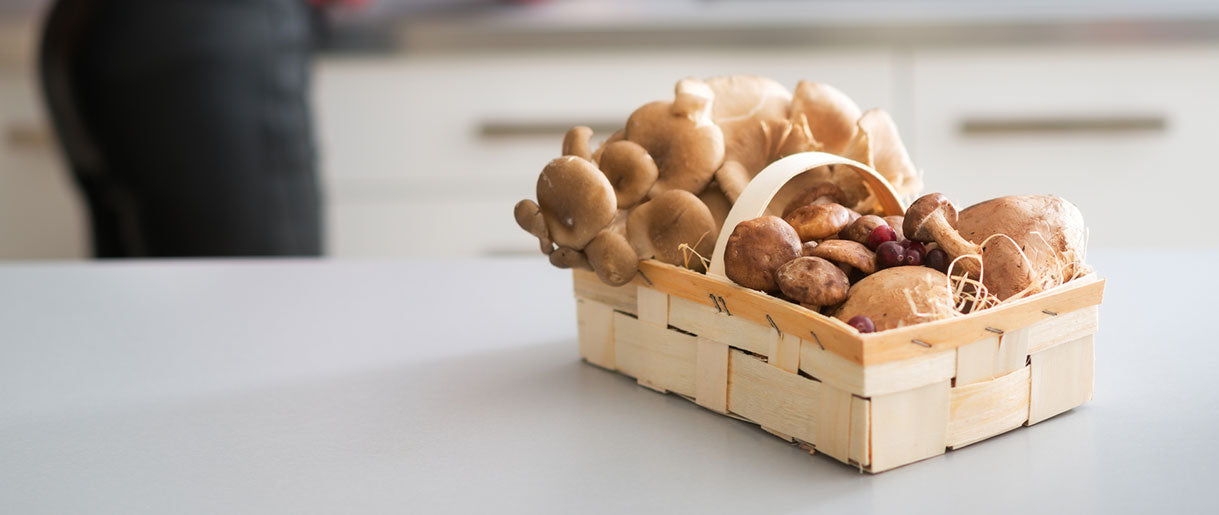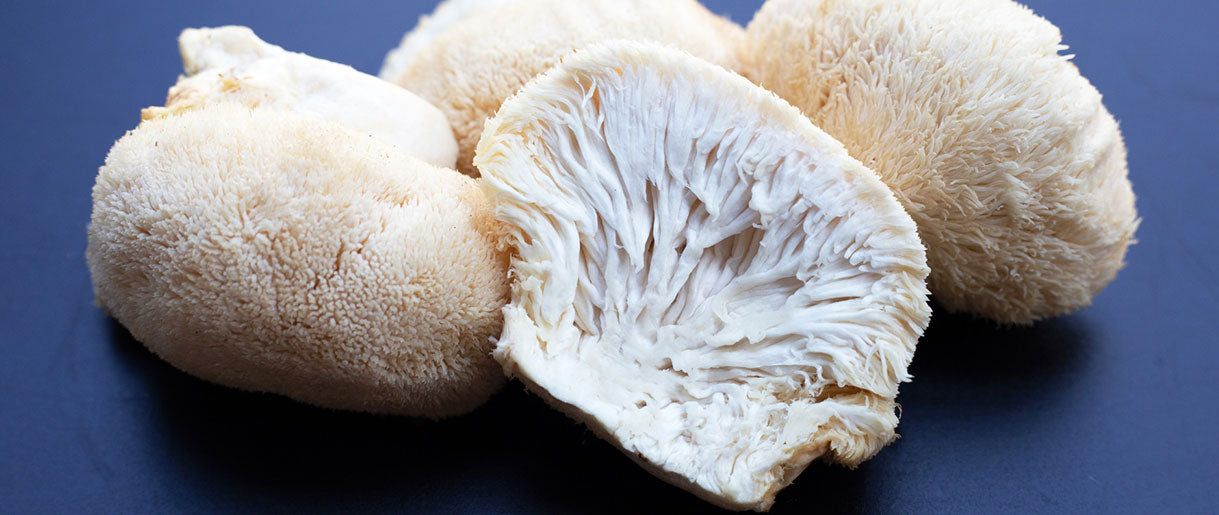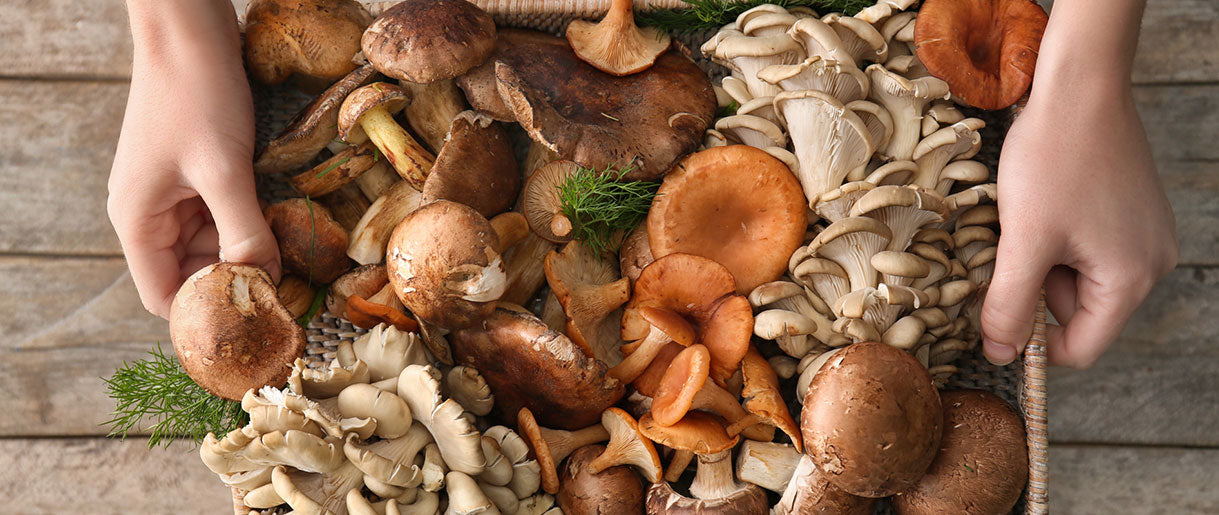You have probably come across the term " mushroom fruiting body" if you have read about functional mushrooms' benefits. This undoubtedly caused puzzled looks and head-scratching if you're still learning about these fascinating medicinal mushrooms. Don't worry; we're here to clarify any confusion.
Mycelium and fruiting body are the two parts of mushrooms(1). The mushroom's vegetative portion is called mycelium. It takes the form of white filaments growing through a nourishing substrate.
While mycelium can be compared to the root system of a mushroom, the portion of the mushroom that emerges from the tree or the ground and is edible is the fruiting body. When most people think of a mushroom, they picture this.
In this post, we'll review what fruiting body mushrooms are and why they're significant in functional fungi.
What Is The Fruiting Body Of Mushroom?
The fruit body mushroom is the stem and cap that immediately come to mind when you think of a mushroom. Fruiting bodies, which occur in various sizes, colors, and shapes, house the reproductive system of the fungus. Its primary purpose is to reproduce and help spread fungal spores so that they can settle somewhere else and continue to grow.
Most of the fungus is found underground as a web known as mycelium, which collects resources from the environment to support the growth of the fruiting body, even though the fruiting body is the only component of the mushroom that is visible. Consider it this way: the mycelium is like the root of an apple tree, whereas the fruiting body is like an apple.
Benefits of Mushroom Fruiting Bodies

Every culture that has used mushrooms for thousands of years has only ever employed the fruiting body and never the mycelium. As a result, in most clinical investigations, each text on traditional herbal medicine and all folktales, ancestry, and cultural traditions involving mushrooms have always been the fruiting body.
Mycelium research is a brand-new emerging area with only 20–30 years of research, whereas fruiting body research has thousands of years to support it. However, research from the past suggests that fruiting bodies may contain 15 times as many active chemicals as mycelium. These active ingredients are the beta-glucans, triterpenes, and ergosterols that genuinely benefit your body (such as focus, energy, immunological and stress support, etc.).
The fruiting body of a mushroom is its most nutritious and effective part since it is where the mycelium transfers the nutrients it absorbs from consuming organic plant material like wood, soil, or leaves (called the substrate). Fruiting bodies also provide additional vitamins, such as vitamins C and D, and minerals, such as copper, phosphorus, zinc, and potassium.
Why Is Mushroom Fruit Body Better Than Mycelium?
The mushroom body contains beneficial compounds that are absent in mycelium. Beta-glucans are polysaccharides present in the fruiting body of the mushroom's cell wall. They are crucial in promoting healthy immunological function. This characteristic of the fruiting body may serve as your guardian against nasties, which can be beneficial throughout seasonal changes.
Triterpenoids found in fruiting bodies may have liver-soothing properties. Like vitamin D, ergosterol is a fungus sterol present in the fruiting body. Moreover, functional mushrooms' fruiting bodies contain significant vitamin B12.
Lovastatin, a substance from the class of substances known as statins, is found in the fruiting body of a functional mushroom. Statins are beneficial substances that might aid the body's natural mechanisms for controlling cholesterol levels when they are within normal ranges.
Choosing Supplements With Fruit Body Of Mushroom

Mycelium, or the fruiting body, is typically found in mushroom supplements. However, there is a significant difference between these two types of supplements regarding health benefits. Beta-glucans, the beneficial substances you seek, are found mainly in the mushroom's fruiting body rather than the mycelium.
However, some manufacturers of mushroom supplements prefer to grow mycelium on grains like rice or oats, grind it all up, and then market the resulting product as "mushroom powder." Manufacturers find this approach appealing since it significantly reduces production time and costs. Nevertheless, the truth is that this process results in a substandard product that doesn't include any mushrooms because it lacks the mushroom's medicinal component —the fruiting body.
So, to get your money’s worth and wholesome health benefits, always look for supplements from 100% real fruiting bodies. Check the number of carbohydrates or starches on the label of your mushroom supplements to find out how much mycelium is in the product.
FAQs About Mushroom Fruiting Body
What Are Three Types Of Fruiting Bodies?
Ascomycetes fungi produce three fruiting bodies: the apothecium, cleistothecium, and perithecium. The apothecium is a cup-like structure, the cleistothecium is closed with a slit, and the perithecium is flask-shaped.
Do Mycelium Produce Fruiting Bodies?
Mycelial fibers support and produce the fruiting body. They obtain nutrition from the substrate and provide it to the fruit body.
Key Takeaways
You must consume the part of medicinal mushrooms that indeed contains health-promoting compounds if you want to reap their benefits. High amounts of beta-glucans, triterpenes, and other unique substances like cordycepin can be found only in the mushroom fruiting body.
References
- Mycelium vs. Fruiting Bodies of Edible Fungi—A Comparison of Metabolites, (1)https://www.ncbi.nlm.nih.gov/pmc/articles/PMC9315710/










Let Us Know Your Comments